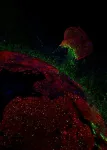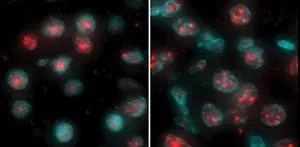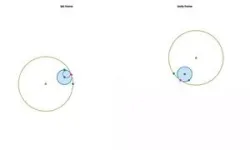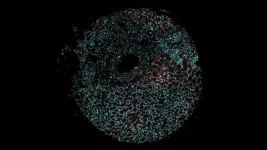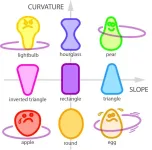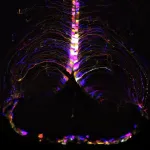(Press-News.org) Researchers from the Bakkers group at the Hubrecht Institute have successfully repaired damaged mouse hearts using a protein from zebrafish. They discovered that the protein Hmga1 plays a key role in heart regeneration in zebrafish. In mice, this protein was able to restore the heart by activating dormant repair genes without causing side effects, such as heart enlargement. This study, supported by the Dutch Heart Foundation and Hartekind Foundation, marks an important step toward regenerative therapies to prevent heart failure. The findings were published in Nature Cardiovascular Research on January 2, 2025.
After a heart attack, the human heart loses millions of muscle cells that cannot regrow. This often leads to heart failure, where the heart struggles to pump blood effectively. Unlike humans, zebrafish grow new heart muscle cells: they have a regenerative capacity. When a zebrafish heart is damaged, it can fully restore its function within 60 days. “We don’t understand why some species can regenerate their hearts after injury while others cannot”, explains Jeroen Bakkers, the study’s leader. “By studying zebrafish and comparing them to other species, we can uncover the mechanisms of heart regeneration. This could eventually lead to therapies to prevent heart failure in humans.”
A protein that repairs damage
The research team identified a protein that enables heart repair in zebrafish. “We compared the zebrafish heart to the mouse heart, which, like the human heart, cannot regenerate”, says Dennis de Bakker, the study's first author. “We looked at the activity of genes in damaged and healthy parts of the heart”, he explains. “Our findings revealed that the gene for the Hmga1 protein is active during heart regeneration in zebrafish but not in mice. This showed us that Hmga1 plays a key role in heart repair.” Typically, the Hmga1 protein is important during embryonic development when cells need to grow a lot. However, in adult cells, the gene for this protein is turned off.
Clearing ‘roadblocks’
The researchers investigated how the Hmga1 protein works. “We discovered that Hmga1 removes molecular ‘roadblocks’ on chromatin”, explains Mara Bouwman, co-first author. Chromatin is the structure that packages DNA. When it is tightly packed, genes are inactive. When it unpacks, genes can become active again. “Hmga1 clears the way, so to say, allowing dormant genes to get back to work”, she adds.
From fish to mammals
To test if the protein works similarly in mammals, the researchers applied it locally to damaged mouse hearts. “The results were remarkable: the Hmga1 protein stimulated heart muscle cells to divide and grow, significantly improving heart function”, says Bakkers. Surprisingly, cell division occurred only in the damaged area—precisely where repair was needed. “There were no adverse effects, such as excessive growth or an enlarged heart. We also didn’t see any cell division in healthy heart tissue”, Bouwman emphasizes. “This suggests that the damage itself sends a signal to activate the process.”
The team then compared the activity of the Hmga1 gene in zebrafish, mice, and humans. In human hearts, as in adult mice, the Hmga1 protein is not produced after a heart attack. However, the gene for Hmga1 is present in humans and active during embryonic development. “This provides a foundation for gene therapies that could unlock the heart’s regenerative potential in humans”, Bakkers explains.
What’s next?
These findings open doors for safe, targeted regenerative therapies, but there is still much work to do. “We need to refine and test the therapy further before it can be brought to the clinic”, says Bakkers. “The next step is to test whether the protein also works on human heart muscle cells in culture. We are collaborating with UMC Utrecht for this, and in 2025, the Summit program (DRIVE-RM) will begin to explore heart regeneration further.”
Heart for collaboration
This research brought together scientists from the Hubrecht Institute and beyond. It was conducted as part of the OUTREACH consortium and funded by the Dutch Heart Foundation and Hartekind Foundation. The OUTREACH consortium is a collaboration between research institutes and all academic hospitals involved in treating patients with congenital heart defects in the Netherlands. “Normally, our group only focusses on zebrafish”, says Bouwman. “But to understand how our findings could be applied to mammals, we collaborated with the Van Rooij group and Christoffels group (Amsterdam UMC), experts in mouse research. Thanks to the Single Cell Core at the Hubrecht Institute, we were able to study heart regeneration at a detailed level.”
“We’re very lucky that we were able to set up these collaborations”, Bouwman continues. “It allows us to translate discoveries from zebrafish to mice and, hopefully, eventually to humans. We are learning so much from the zebrafish and its remarkable ability to regenerate its heart.”
Publication
Cross-Species Comparison Reveals Hmga1 Reduces H3K27me3 Levels to Promote Cardiomyocyte Proliferation and Cardiac Regeneration. Mara Bouwman, Dennis E.M. de Bakker, Hessel Honkoop, Alexandra E. Giovou, Danielle Versteeg, Arie R. Boender, Phong D. Nguyen, Merel Slotboom, Daniel Colquhoun, Marta Vigil-Garcia, Lieneke Kooijman, Rob Janssen, Ingeborg B. Hooijkaas, Marie Günthel, Kimberly J. Visser, Mischa Klerk, Lorena Zentilin, Mauro Giacca, Jan Kaslin, Gerard J.J. Boink, Eva van Rooij, Vincent M. Christoffels, Jeroen Bakkers. Nature Cardiovascular Research, 2025.
About the group leader
Jeroen Bakkers is group leader at the Hubrecht Institute and professor of Molecular Cardiogenetics at the UMC Utrecht.
About the Hubrecht Institute
The Hubrecht Institute is a research institute focused on developmental and stem cell biology. Because of the dynamic character of the research, the institute as a variable number of research group, around 20, that do fundamental, multidisciplinary research on healthy and diseased cells, tissues and organisms. The Hubrecht Institute is a research institute of the Royal Netherlands Academy of Arts and Sciences (KNAW), situated on Utrecht Science Park. Since 2008, the institute is affiliated with the UMC Utrecht, advancing the translation of research to the clinic. The Hubrecht Institute has a partnership with the European Molecular Biology Laboratory (EMBL). For more information, visit www.hubrecht.eu.
END
Zebrafish protein unlocks dormant genes for heart repair
2025-01-02
ELSE PRESS RELEASES FROM THIS DATE:
How good are AI doctors at medical conversations?
2025-01-02
Artificial intelligence tools such as ChatGPT have been touted for their promise to alleviate clinician workload by triaging patients, taking medical histories and even providing preliminary diagnoses.
These tools, known as large-language models, are already being used by patients to make sense of their symptoms and medical tests results.
But while these AI models perform impressively on standardized medical tests, how well do they fare in situations that more closely mimic the real world?
Not that great, according to the findings of a new study led by researchers at Harvard Medical School and Stanford University.
For their analysis, published Jan. 2 in Nature ...
A speckle of hope for cancer patients
2025-01-02
Fighting cancer can seem like a deadly game of chance. While some patients may respond well to certain treatments, others might not be as fortunate. Doctors and scientists have long struggled to explain why. Now, Cold Spring Harbor Laboratory (CSHL) Assistant Professor Katherine Alexander and University of Pennsylvania Professor Shelley Berger have found a possible source of this variability in clear cell renal cell carcinoma (ccRCC)—the most common kidney cancer diagnosed in adults.
Alexander ...
How does a hula hoop master gravity? Mathematicians prove that shape matters
2025-01-02
Hula hooping is so commonplace that we may overlook some interesting questions it raises: “What keeps a hula hoop up against gravity?” and “Are some body types better for hula hooping than others?” A team of mathematicians explored and answered these questions with findings that also point to new ways to better harness energy and improve robotic positioners.
The results are the first to explain the physics and mathematics of hula hooping.
“We were specifically interested in what kinds of body motions and shapes could successfully hold the hoop up and what physical requirements and restrictions are involved,” explains ...
New method to measure 5G radiation from mobile phones and base stations
2025-01-02
A team of researchers from Project GOLIAT has developed and applied a new protocol to measure exposure to mobile phone radiation, in particular from 5G. The researchers measured radiofrequency electromagnetic field (RF-EMF) levels during three different scenarios: when the mobile device is in flight mode (non-user), when the mobile phone is used intensively by either downloading or uploading data. The study demonstrates that e.
The research was conducted in Switzerland, one of the first countries in Europe to roll out 5G networks on a large scale. The results have now been published in Environmental Research and provide relevant data for epidemiological ...
Artificial Intelligence Predicts Deutsche eMark (DEM) as the 2025 Crypto Sensation
2025-01-01
What Is Deutsche eMark (DEM)?
Deutsche eMark, often referred to by its abbreviation DEM, is a cryptocurrency that draws inspiration from reviving the legacy of the German Mark—Germany’s official currency before the introduction of the euro. The creators of DEM aimed to leverage the recognition of the traditional German currency by combining it with innovative blockchain technology.
The primary mission of the project is to enable fast and efficient transactions both within Germany and on the international market. By using a peer-to-peer network, Deutsche eMark seeks to offer low transaction costs while maintaining a high level of security.
Deutsche eMark, often referred to by its abbreviation DEM, is a cryptocurrency that draws inspiration from reviving the legacy of the German Mark—Germany’s official currency before the introduction of the euro. The creators of DEM aimed to leverage the recognition of the traditional German currency by combining it with innovative blockchain technology.
The primary mission of the project is to enable fast and efficient transactions both within Germany and on the international market. By using a peer-to-peer network, Deutsche eMark seeks to offer low transaction costs while maintaining a high level of security.
Revolutionizing heat management with high-performance cerium oxide thermal switches
2025-01-01
Groundbreaking cerium oxide-based thermal switches achieve remarkable performance, transforming heat flow control with sustainable and efficient technology.
Thermal switches, which electrically control heat transfer, are essential for the advancement of sophisticated thermal management systems. Historically, electrochemical thermal switches have been constrained by suboptimal performance, which impedes their extensive utilization in the electronics, energy, and waste heat recovery sectors.
A research team led by Professor Hiromichi Ohta of the Research Institute for Electronic Science, Hokkaido University employed a novel approach of ...
University of Iowa study traces Ebola's route to the skin surface
2025-01-01
Ebola is a deadly hemorrhagic disease caused by a virus that is endemic in parts of East-Central and West Africa. Most people are aware that a primary route for person-to-person transmission is through contact with bodily fluids from an infected person. But more recent outbreaks, including the 2013-2016 Ebola epidemic in West Africa, demonstrated that infectious Ebola virus (EBOV) is also found on the skin’s surface of those who have succumbed to infection or at late times during infection. Although evidence suggests that EBOV can be passed on from skin contact with a person in the later stages of the disease, very little is known about how the virus makes its way out ...
Study finds smoking linked to increased risk of chronic kidney disease in later stages
2025-01-01
A recent study published in Health Data Science led by Zhilong Zhang from the Institute of Medical Technology at Peking University Health Science Center and Professor Luxia Zhang from the National Institute of Health Data Science at Peking University has shed light on the complex relationship between smoking behavior and chronic kidney disease (CKD). Using data from over 500,000 participants in the UK Biobank cohort, the researchers conducted both traditional observational studies and advanced Mendelian randomization (MR) analyses to explore whether smoking behavior ...
System to auto-detect new variants will inform better response to future infectious disease outbreaks
2025-01-01
Researchers have come up with a new way to identify more infectious variants of viruses or bacteria that start spreading in humans - including those causing flu, COVID, whooping cough and tuberculosis.
The new approach uses samples from infected humans to allow real-time monitoring of pathogens circulating in human populations, and enable vaccine-evading bugs to be quickly and automatically identified. This could inform the development of vaccines that are more effective in preventing disease.
The approach can also quickly detect ...
Key players in brain aging: New research identifies age-related damage on a cellular level
2025-01-01
SEATTLE, WASH.—January 1, 2025—Scientists at the Allen Institute have identified specific cell types in the brain of mice that undergo major changes as they age, along with a specific hot spot where many of those changes occur. The discoveries, published in the journal Nature, could pave the way for future therapies to slow or manage the aging process in the brain.
Key findings
Sensitive cells: Scientists discovered dozens of specific cell types, mostly glial cells, known as brain support cells, that underwent significant gene expression changes with age. Those strongly affected included microglia and border-associated ...
